The Road in and out of Mt Augustus

 Can you name the biggest rock in Australia? No, it’s not Uluru.
It’s not only the biggest in Australia but also the world, and it’s located in outback Western Australia.
Known as Burringurrah to the local Wadjari Aboriginal people, Mount Augustus is twice the size of Uluru at a staggering 10 kilometres long, 5 kilometres wide and 717 metres above the surrounding mulga scrub and red dirt. Unlike Uluru, much of Mt Augustus’ orange-brown sandstone is covered in vegetation. The colour of the rock changes from vivid orange at sunrise to red at sunset.
The Mt Augustus National Tourist Park is 850 kilometres north of Perth and almost 500 km east of Carnarvon in the Gascoyne region. The rock was named after Sir Augustus Charles Gregory, the brother of the first European to climb to the summit in June 1858. Francis Thomas Gregory was on a 107-day journey through the region. Unlike Uluru, visitors are welcome to climb the rock.
Tip: If you intend to climb to the summit, beware of the searing heat in summer. The wildflower season runs between June and September in this area and is popular with visitors.
Can you name the biggest rock in Australia? No, it’s not Uluru.
It’s not only the biggest in Australia but also the world, and it’s located in outback Western Australia.
Known as Burringurrah to the local Wadjari Aboriginal people, Mount Augustus is twice the size of Uluru at a staggering 10 kilometres long, 5 kilometres wide and 717 metres above the surrounding mulga scrub and red dirt. Unlike Uluru, much of Mt Augustus’ orange-brown sandstone is covered in vegetation. The colour of the rock changes from vivid orange at sunrise to red at sunset.
The Mt Augustus National Tourist Park is 850 kilometres north of Perth and almost 500 km east of Carnarvon in the Gascoyne region. The rock was named after Sir Augustus Charles Gregory, the brother of the first European to climb to the summit in June 1858. Francis Thomas Gregory was on a 107-day journey through the region. Unlike Uluru, visitors are welcome to climb the rock.
Tip: If you intend to climb to the summit, beware of the searing heat in summer. The wildflower season runs between June and September in this area and is popular with visitors.

Driving to Mount Augustus
Plenty of research had gone into this trip. I hadn’t travelled through the Pilbara since I was very young so I wasn’t sure what to expect. Our travelling party included a total of: Six adults and eight kids In three Toyota Prado vehicles packed to the hilt Towing two camper trailers and one trailer From Perth, we drove up the coast to spend some time in Denham. It was the July school holidays, so we were soaking up the sunshine and visiting the dolphins at Monkey Mia each day.Denham to Gascoyne Junction
From Denham, we drove to Carnarvon for lunch then on to Gascoyne Junction. We weren’t the only ones who appreciated the perfectly sealed road. Much to the kids’ delight, cows meander along the roadway eventually giving way to our beeping horn. We stayed at the newly built Junction Pub and Tourist Park. Much of the Gascoyne Junction town was washed away in a devastating flood in December 2010. The replacement park has generous sized bays, shiny new amenities in the kitchen block and the best looking ablution block we had ever seen in a caravan park. Tip: There is no such thing as fences to contain livestock in much of the Pilbara so expect the unexpected on the roads. Moo.Gascoyne Junction to Mt Augustus
The Kennedy Range National Park was next on our itinerary, and we were keen to explore the area after reading up about its spectacular gorges, honeycomb rock, cliffs and canyons. The WA Department of Parks and Wildlife campsite at Kennedy has drop toilets but no power, water or showers. We knew that the Gascoyne River had broken its banks and the road to Kennedy Range was closed yesterday, but we hoped the flood waters had subsided overnight and the road had reopened. We drove to the information office and the news wasn’t good – still closed. The flooded roadway wasn’t far out of town so we thought we’d check it out for ourselves. We watched a car cross from the other direction, but it wasn’t towing a camper trailer or trailer like our party. We decided our insurance companies probably wouldn’t pay out on flooded 4WD’s that are stuck halfway between road closed signs! The detour would have taken too long so we decided the Kennedy Range would have to wait for the next Pilbara trip. We headed towards Cobra-Dairy Creek Road and on to Mt Augustus instead. It wasn’t long before we could see the giant rock in the distance. Tip: Be prepared to change your itinerary while travelling around the Pilbara. River crossings can be flooded, and roads closed at any time of the year, not just during the wet season.
Mt Augustus – Exploring the National Park
We pulled into Mount Augustus Tourist Park late afternoon, set up camp and soon realised we were in for some of the coldest nights we had ever experienced. After little sleep the first night, I decided the only way to stay warm was to sleep in all the layers I was wearing before bed, just zip up the sleeping bag. Despite the freezing mornings some of the party managed to get up to see the first light hitting the ochre rock. Unlike many visitors to the rock, we didn’t make the trip to walk the grade 5 summit track. I’m not sure which part put us off the most. It could have been the high level of fitness required, the rough, steep track (unmarked in parts) or the thought of walking 20 km with young kids. Not doubt the views are well worth the effort. Anyway, we decided to drive the 49 km Loop Road around the base. Almost the same as walking to the top we decided! On the road we discovered a hive of bees living underground which fascinated the kids. We also did a few short walks. The Saddle Trail takes you to see the Pound, a natural basin the stockmen used for holding the cattle prior to moving them on to Meekatharra. The Ooramboo Trail at the end of Loop Road takes you to see some Aboriginal artwork. We visited the beautiful tree-lined Cattle Pool on the Lyons River. There was plenty of birdlife and the first of the wildflowers were out including the Mulla Mulla and Tassle Top. The pool reflected the majestic white river gums. The crisp, clear sunny days of winter at Mt Augustus are amazing.
Tip: The weather in Mt Augustus National Park is extreme. Freezing nights in winter while the daytime temperature in summer can reach the mid-40s. Avoid walking in the heat of the day during summer day and take plenty of water with you at all times of the year.
We visited the beautiful tree-lined Cattle Pool on the Lyons River. There was plenty of birdlife and the first of the wildflowers were out including the Mulla Mulla and Tassle Top. The pool reflected the majestic white river gums. The crisp, clear sunny days of winter at Mt Augustus are amazing.
Tip: The weather in Mt Augustus National Park is extreme. Freezing nights in winter while the daytime temperature in summer can reach the mid-40s. Avoid walking in the heat of the day during summer day and take plenty of water with you at all times of the year.
Driving out of Mount Augustus
The next stop on our itinerary was Tom Price for supplies and our last shower before Karijini National Park. We took Mt Vernon Road, and the corrugations and dust began soon into the trip. The road changed regularly from gravel to patches of large, jagged rocks but always plenty of dust, so it was a long convoy. Two of the three cars needed a tyre change. Our car suffered the first puncture after hitting a patch of sharp rocks quite early in the trip. There were many more patches of rocks further up the road because another vehicle in the party fell victim later in the day. Not far from Tom Price, there was a short reprieve from the corrugations in a small stretch of sealed road outside a mine site but otherwise, most of the day had been a bone-jarring drive. We finally limped into the Tom Price Caravan Park after dark and made plans to visit the tyre shop early the next morning. The road condition was a popular topic of conversation in the park. One grey nomad said he couldn’t believe anyone would drive more than 50km/h. We were glad he had arrived the day before us, and we weren’t one of the ‘reckless’ drivers he was referring to. Driving at that speed he clearly wasn’t planning to spend any time in the tyre fitting waiting area! Overnight two of the cars had a tyre deflate, so the day’s final tally was four car tyres needing to be replaced or repaired. If we make the Mt Augustus to Tom Price trip again, we’ll either be grey nomads happy to drive at 50 km/h, or we’ll head back to the coast to avoid the corrugations and hefty tyre bill.
Tip: Drive to the road conditions and be prepared to change a tyre (consider two spares if you are travelling on your own) and plenty of cash for when you reach the next tyre shop. There is a remote premium to pay.
Overnight two of the cars had a tyre deflate, so the day’s final tally was four car tyres needing to be replaced or repaired. If we make the Mt Augustus to Tom Price trip again, we’ll either be grey nomads happy to drive at 50 km/h, or we’ll head back to the coast to avoid the corrugations and hefty tyre bill.
Tip: Drive to the road conditions and be prepared to change a tyre (consider two spares if you are travelling on your own) and plenty of cash for when you reach the next tyre shop. There is a remote premium to pay.
Related Products
Hema Mid West Western Australia SG50-02 - Mount Phillips WA 1:250K Topographic Map Discovering Mount Augustus National Park Bang-em-allFeatured collection
Categories:
4wd
australia
news
Posted on: May 15, 2018
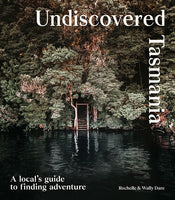
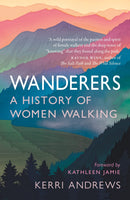
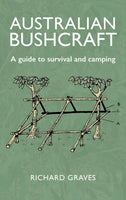
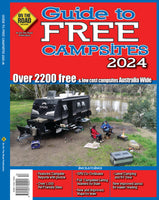
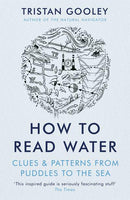



Comments